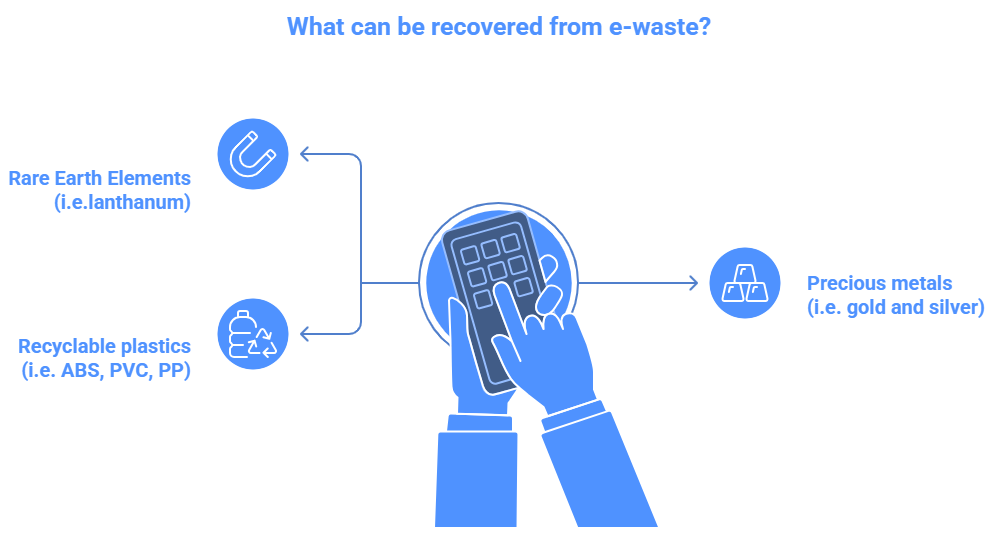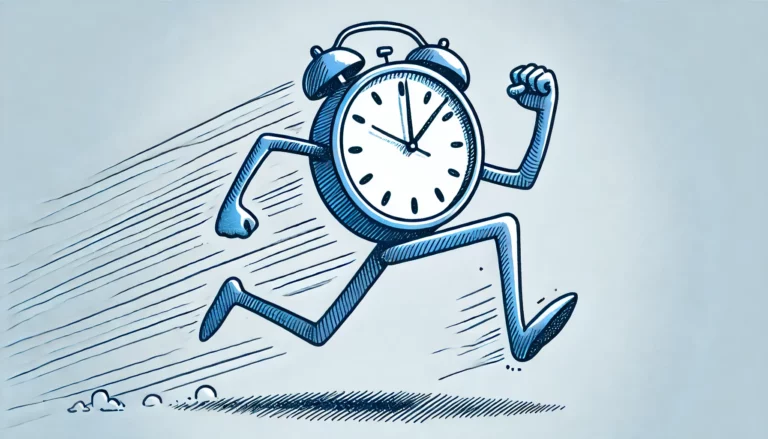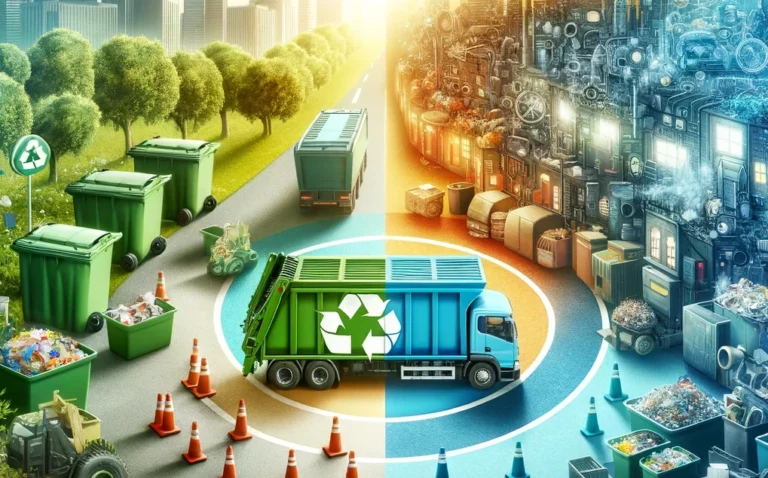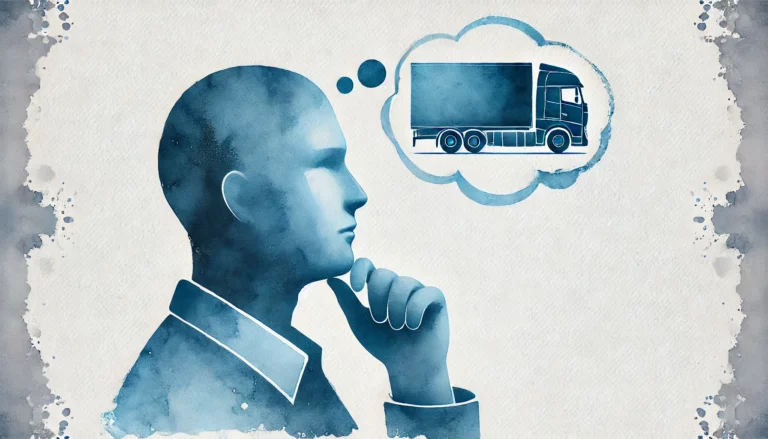E-waste in Europe: what’s working, what’s broken, and what’s next
Electronic waste grows faster than many expect. In 2022, the world generated a record 62 million tonnes of e‑waste, yet only about 22–24% was collected and recycled – with projections pointing to a further decline by 2030. This underscores a critical imbalance: consumption is accelerating, but our recycling systems are lagging behind. Europe, though comparatively more advanced, must still grapple with systemic barriers. The cost of collecting dispersed e-waste, coupled with consumer unawareness, results in significant volumes bypassing mainstream recycling channels.
However, effective e‑waste recycling in Europe remains pivotal. Proper recycling reduces harmful environmental impacts and closes the loop on high-value materials—transforming a liability into a strategic resource.
Which electronics become waste & why it matters

E‑waste encompasses an expansive range—from smartphones and laptops to medical equipment and solar panels . These devices include components that vary widely in hazard levels and recyclability.
Critically, hidden within these gadgets are valuable materials like rare earth elements (REEs), precious metals (gold, silver), and recyclable plastics. Recovering these components significantly offsets reliance on new mining and supports European strategic autonomy.
Effective e‑waste recycling in Europe relies on proper categorization. Hazardous elements must be safely removed, while resource-rich parts are extracted and channeled back into industrial supply lines. This precision increases both environmental safety and economic return.
Do you need help with managing your e-waste? Contact us:
What’s working: the progress of e‑waste recycling in Europe
Europe is steadily advancing in e-waste recycling in Europe, particularly when measured by WEEE collection rates. In 2022, the EU achieved a 40.1% WEEE collection rate—calculated as the proportion of waste electrical and electronic equipment collected relative to the average amount of equipment placed on the market over the prior three years (2019–2021) . That year, around 11.2 kg of WEEE were collected per inhabitant, underscoring steady progress from prior years.
In 2022, three EU countries—Bulgaria, Latvia, and Slovakia—each met the ambitious WEEE collection target of 65%, based on equipment placed on the market over the previous three years. Additionally, eleven countries surpassed the earlier minimum collection target of 45% (Czech Republic, Poland, Finland, Ireland, Austria, Belgium, Lithuania, Sweden, Croatia, Romania and Luxembourg), signaling strong regional engagement. Two other countries, Spain and France, reported rates just below that threshold, at approximately 43.0% and 42.7% respectively.
| COUNTRY | COLLECTION RATE % (2022) |
|---|---|
| CZECH REPUBLIC | 57 |
| POLAND | 53,4 |
| FINLAND | 52,4 |
| IRELAND | 51,2 |
| AUSTRIA | 50,1 |
| BELGIUM | 49,1 |
| LITHUANIA | 49 |
| SWEDEN | 48 |
| CROATIA | 46,6 |
| ROMANIA | 45,4 |
| LUXEMBOURG | 45,1 |
This performance highlights the importance of cohesive e-waste recycling in Europe—through strengthened legislation (like the WEEE Directive), enhanced collection infrastructure, and public commitment. While the EU average remains below the 65% goal, the success of these countries demonstrates that scaling up is feasible with political will and logistical capacity. To truly meet Europe’s sustainability ambitions, more nations must adopt similar frameworks and investments.
What’s broken: barriers holding back e‑waste recycling in Europe
Despite these successes, challenges remain stubborn. Over 50% of EU-produced e-waste still goes uncollected or is exported illegally. In countries like Italy and Poland, logistical barriers and fragmented policies inhibit efficient recycling access. Illegal exports—often dressed up as functional electronics—risk harming economies and ecologies in nations with weak regulatory safeguards.
Meanwhile, economic factors hurt recycling incentives. When scrap commodity prices fall, the business case for recycling weakens. The absence of uniform regulations across EU nations further complicates cross-border recycling operations.
Innovation & policy: the future of e‑waste recycling in Europe
Innovation is reshaping the field. Artificial intelligence (AI)-powered sorting systems, using sensors and machine learning, are identifying components of e-waste at unprecedented speed and accuracy . These systems enhance efficiency, reduce contamination, and lower processing costs. Robotic disassembly is also gaining traction, making the recycling process safer and faster for complex devices .
In Switzerland, researchers at ETH Zurich developed a new extractant to efficiently isolate rare earth elements—like europium—from fluorescent lamps, supporting EU targets for strategic material supply. Similarly, Queen’s University Belfast’s QUILL team is pioneering eco-friendly recycling using ionic liquids, which recover REEs without harsh chemicals .
Policy reforms are catching up too. The EU is revising WEEE regulations to emphasize circularity and implement stricter recovery targets . Add to that, initiatives like the UK’s “polluter pays” approach are being revamped to hold sellers accountable for disposal costs.
Finally, TNO’s research indicates that smart recovery of critical raw materials from e-waste could satisfy up to 31% of the EU’s demand, bolstering the business case for advanced recycling.
Closing gaps and building a greener digital future
Today’s snapshot of e-waste recycling in Europe reveals both promise and pitfalls. While infrastructure, regulations, and innovation show progress, the scale of waste generation still outpaces our ability to recycle it efficiently. Moving forward demands collaboration: governments must align and enforce, companies must invest in innovation, and citizens must recycle diligently.
The digital landscape isn’t slowing—so let’s ensure our recycling systems aren’t either.







